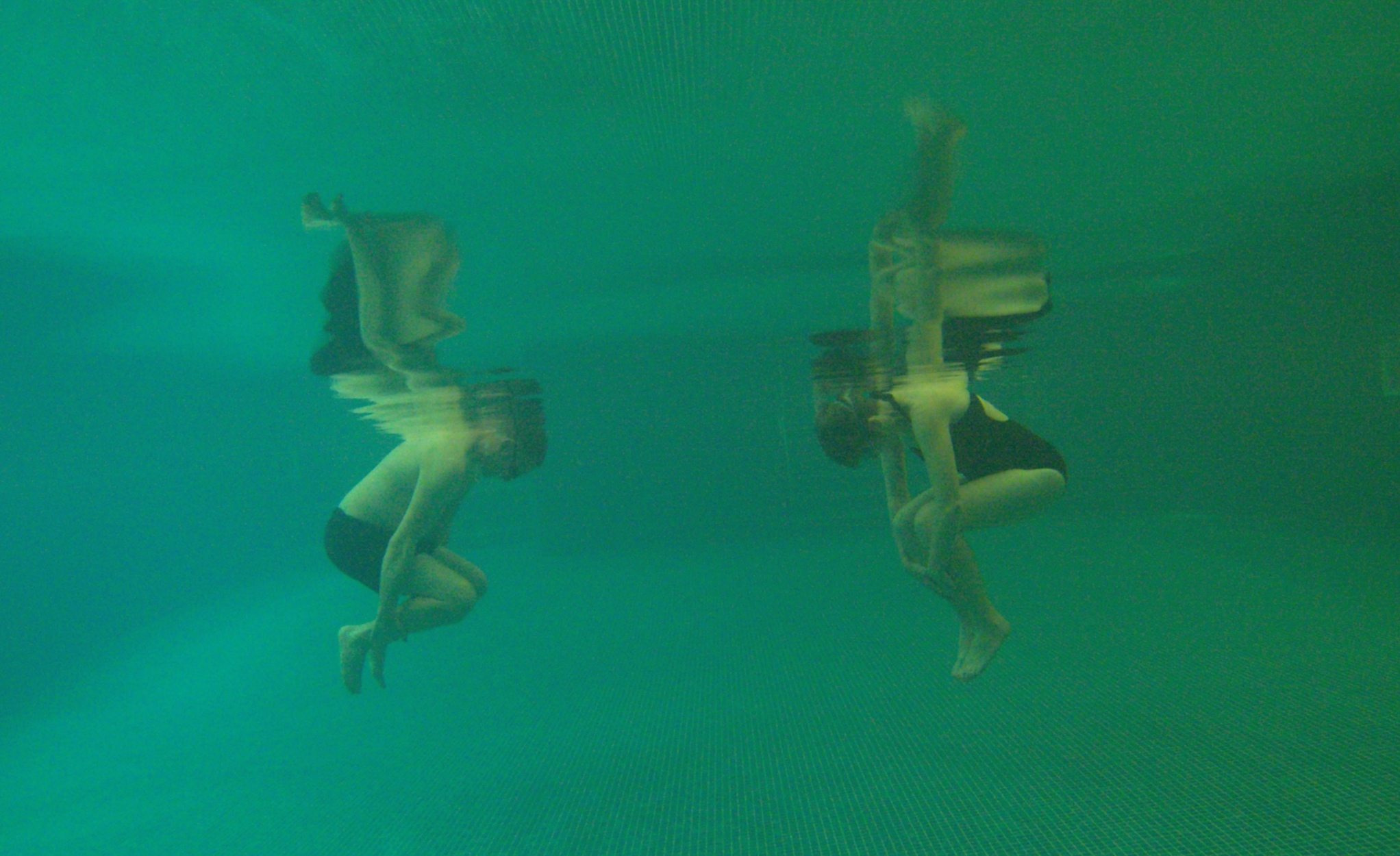Is the water a place for striving for you? Or a place for liberation?
Most people tense up in water even more than on dry land. But if we approach swimming in a certain way, we can hang loose and be free from the moment we get in the water to the moment we get out.
When learning to swim, the main goal has to be to trust and enjoy the support of the water. Not to see it as an obstacle to overcome, nor as a place primarily for doing exercise. Once you’re floating independently, you can start to move around. Next, it’s useful to learn new skills like getting your face out to breathe, so you can go into deep water or swim a length.
But, if getting your face out is causing stress, don’t spend too much time trying to crack it. Are you getting water up your nose when you rotate, or straining your neck to get your face out breaststroke style? When you notice you’re striving, go back to floating about with a free neck. Swim underwater, without worrying about getting anywhere. This is the stuff that does all of us most good.
Learning to swim often means trying to coordinate breaststroke and front crawl so that the ultimate, possibly overrated, goal of swimming for exercise can be accomplished. An impasse may be reached when the strokes don’t seem to be coming together. The liberation and joy encountered with the new experience of just floating gets lost. A sense of frustration brought about by trying too hard replaces it. Lots of adult learners, satisfied that they’re getting the ball over the net, go off and swim lengths without having gained trust in the water first. This makes for a joyless experience with questionable health benefits.
We have to be prepared to work with what we’ve got, so that we don’t lose enjoyment, instead of striving towards some distant goal, like swimming for exercise, which we hope to enjoy in the future.
If you can float and regain your feet independently, the joy of being in water is there to be had already. If you’re not independent yet, enjoy the process of learning to let the water support you because it’s the most important thing.
Easy Plan:
- Find a few metres of shallow water, give your face to the water, play dead, glide, move about. Let air out without forcing it.
- Roll on to your back and let air come in before returning to the water and relaxing again. Maybe use this skill to keep going a bit.
- Practise rolling from your back all the way on to your tummy, face down, without forgetting to let the water support you.
- Drop under the surface vertically as if to sit on the floor.
Benefits:
- Physical, and emotional, support from the water
- A free neck, open back and loose limbs
- Calmer breathing
- Freedom of movement
- Peace and quiet
Staying with the plan to keep the neck free rarely happens out of the water because life gets in the way. But in water, if you make a decision not to pull your head back and shorten your spine, and limit yourself to activities which help you release and expand, the magic of water will work for you.


